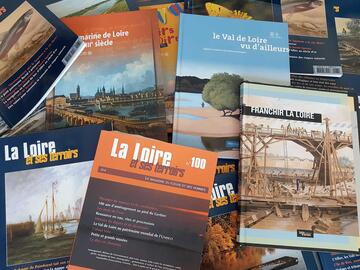
06/03/2025
[Fr] Décès de Philippe Auclerc
C'est avec tristesse que nous avons appris aujourd'hui le décès de Philippe Auclerc, co-fondateur de la maison d'édition "Loire et terroirs" et rédacteur...
Published on 11 October 2016 - Updated 16 November 2016
Cet article date d'il y a plus de 8 ans
The Silk Roads were an interconnected web of routes linking the ancient societies of Asia, the Subcontinent, Central Asia, Western Asia and the Near East, and contributed to the development of many of the world's great civilisations. This section of the Silk Roads extends over 5,000km, from Chang’an/Luoyang, the central capital of China in the Han and Tang dynasties, to the Zhetysu region of Central Asia.
In 2000, UNESCO inscribed the Loire Valley on the World Heritage of Humanity List as it reflects the wealth and diversity of the Earth’s cultural and natural heritage. Each month, Mission Val de Loire presents a different site to you which, as well as being a world heritage, is also part of our heritage.
This corridor took shape between the 2nd century BC and 1st century AD, and remained in use until the 16th century, linking multiple civilisations and facilitating far-reaching exchanges of activities in trade, religious beliefs, scientific knowledge, technological innovation, cultural practices and the arts.
The 33 components included in the routes network include capital cities and palace complexes of various empires and Khan kingdoms, trading settlements, Buddhist cave temples, ancient paths, posthouses, passes, beacon towers, sections of The Great Wall, fortifications, tombs and religious buildings.
They represent one of the world’s preeminent long-distance communication networks stretching, as the crow flies, to around 7,500 km, but extending to in excess of 35,000 km along specific routes. While some of these routes had been in use for millennia, by the 2nd century BC the volume of exchange had increased substantially, as had the long distance trade between east and west in high value goods, and the political, social and cultural impacts of these movements had far-reaching consequences upon all the societies that encountered them.